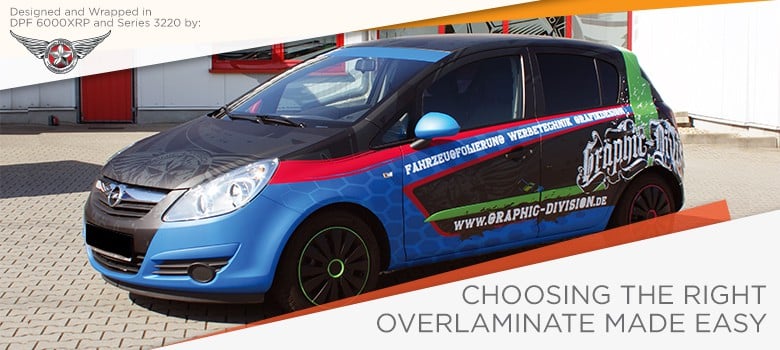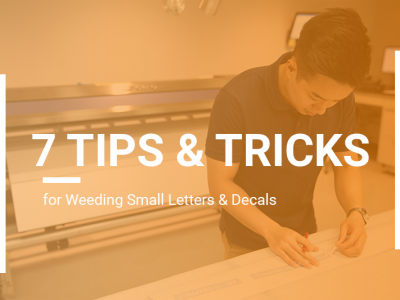Have you ever wondered how to choose the right overlaminate for your large-scale graphic application? Did you know that the right overlaminate will increase the life of your graphics as much as 50%? Overlaminates are just as important as the vinyl choice itself.
How to Choose an Overlaminate
Here is a brief explanation of the considerations that need to be made when choosing which overlaminate you are going to purchase.
This video is also available with subtitles in German, French and Spanish
Mix and Match
The common misconception about this topic is that you cannot mix and match Cast overlaminate with a Polymeric or Monomeric Vinyl. This is not true, and here’s why. As long as the overlaminate is a higher quality than the underlying printed vinyl itself, you can mix and match it. You never want to put a lower quality overlaminate over a Cast Vinyl because this will cause shrinkage and edge curl.

Surfaces and Substrates
Choosing a overlaminate based on your surface type:
- Cast overlaminates should be used anytime you are going to put multi-directional stretch into the film. This means that anytime you are doing a 3D application, you need to use a Cast Vinyl and Cast Overlaminate.
- On flat or semi-curved applications, you can use a standard Polymeric overlaminate to overlay a Polymeric or Monomeric Vinyl. This is in reference to regular signage, point of purchase displays and interior walls – in other words, a 2D application.
That is all you need to know to make your choice easy! If you have any questions please feel free to contact us on arlon.com.
To view our other Arlon Europe Exclusive videos, check out our YouTube channel.


